The Talwar: A Masterpiece of Indian Sword Making

What’s in this article?
The Islamic world has a long history of swordmaking. From Mughal India came the talwar with its characteristic disc pommel and curved blade. Sometimes spelled tulwar, the Indian
Let’s explore the history of the Indian talwar, how it differs from other Islamic swords, and where you can get it online.
Characteristics of Talwar Sword
Indian swords, like the talwar, are recognized for their distinctive curved shapes, high-quality metalwork, and ornamentations.
Here are the unique characteristics of the Indian talwar:
Metal and Construction
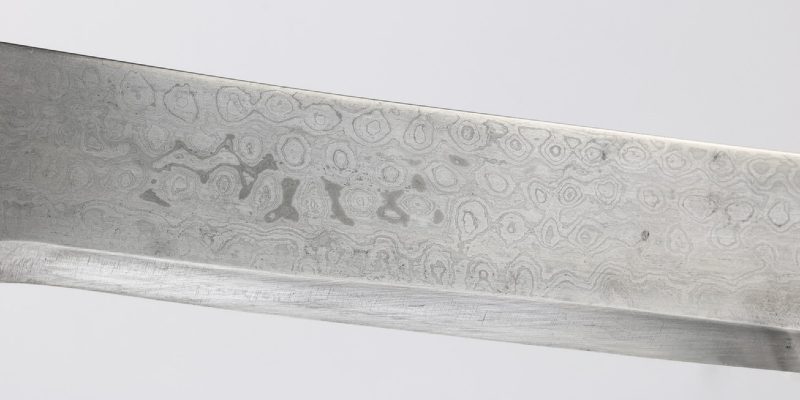
The ancient Indian wootz steel was one of the finest in the world and was traded over Europe and the Middle East to produce damascus blades that have a watered and streaked appearance. Historical Indian talwars were often made of prized wootz steel and had damascus steel blades that were tough and flexible. By the 18th century, many talwar blades were manufactured from Europe.
However, contemporary swords with so-called damascus blades have nothing to do with wootz steel, as its production declined in the mid-18th century. Historical damascus steel was cast from wootz, which gave it its pattern and properties. On the other hand, modern damascus steel is constructed by pattern-welding soft and hard steel, making its watery pattern a decorative feature than a functional one.
Blade Appearance
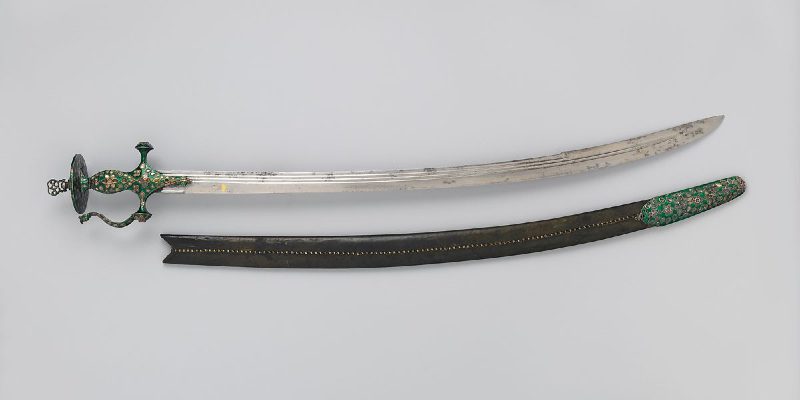
Similar to the European sabre, the talwar is a curved blade but sometimes has a raised or sharp back edge. Indian talwars often had a ricasso, an unsharpened portion on the blade, inlaid with gold. Ones made for Muslim princes often had an inscription along the back edge, while others had plain surfaces and fullers.
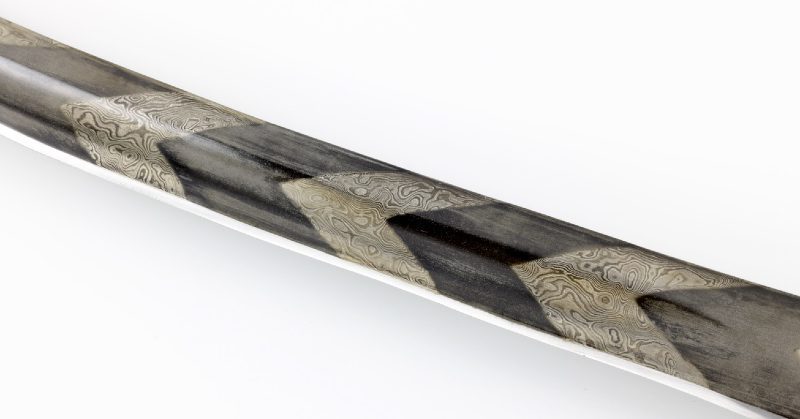
Some swordsmiths also showed off their skills with chevron patterned blades called lehria, which was common in Rajasthan and Punjab during the 17th century. The pattern was achieved by welding alternate sections of steel in a chevron design. The blade design did not make it stronger, but it did not make it too weak for actual use as well.
Size and Length
Historical talwars usually had a blade length of over 70 centimeters and overall length of more than 90 centimeters. They served as slashing weapons, suited for making powerful draw-cut blows, and could easily split helmets with a single blow.
Sword Mounting
Apart from the blade, talwar hilts were often made from wootz steel and may vary in design depending on the region. Some featured a knuckle bow and different shaped langets and quillons.
Grip and Pommel
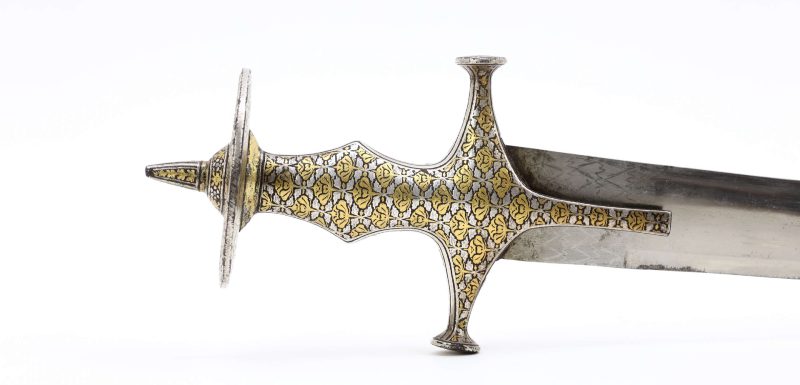
Indian talwars have a vase-shaped grip section with a V-shaped top. It is also most recognized for its disc pommel, which usually features a spike that a swordsman could use to strike an opponent in close quarters combat. Some swords had an inscription in Punjabi under the pommel, usually the owner’s name and the date they were made.
Sword Guard
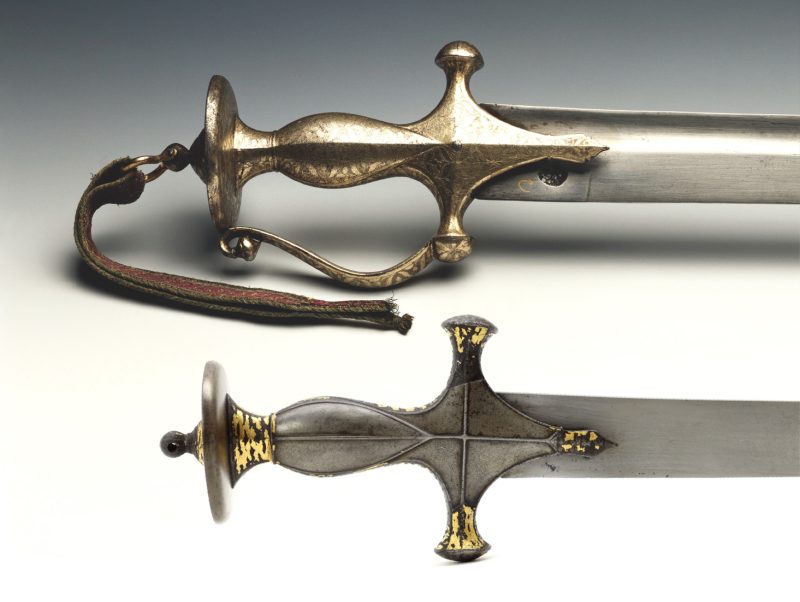
Apart from short quillons or arms of the crossguard, the talwar features two langets or metal strips extending down the blade to help secure the hilt in the scabbard. Talwars from Rajasthan often had more squared langets.
Rajasthan-manufactured hilts often had an open knuckle guard, and those from Punjab usually had a knuckle guard ending in a flower bud. However, many Rajput swordsmen preferred a talwar hilt without a knuckle bow.
Gold or Silver Decoration

The talwar hilt is often decorated with koftgari—steel inlaid with gold—which is typical on Indian swords. On the other hand, metalwork done in contrasting colors, usually silver and gold, is referred to as Ganga-Jamni. 17th-century designs usually included large flowers or birds, while 19th-century designs were more delicate, usually flower bouquets, vases, and garden landscapes.
Scabbard
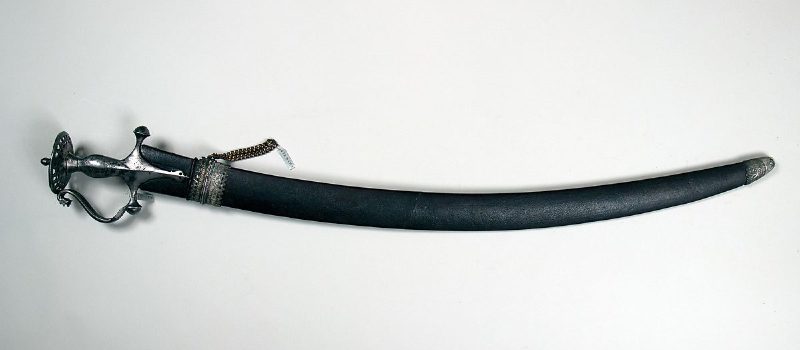
Metal scabbards would dull the blade, so historical talwar often had the wooden scabbards covered with velvet or leather with a metal chape to protect its end. However, some rare historical talwar had wooden scabbards encased in iron, elaborately pierced with decorations. Sword scabbards usually have a V-shaped mouth that fits with the langets. Some had a belt attached, while others had suspension rings, which were uncommon for a talwar.
Indian Talwar vs. Scimitar
The term scimitar is a generic name the Europeans used to refer to the curved swords of the Islamic world and curved Asian swords. In wars with the Ottomans, the Europeans first encountered the curved blades and called them scimitars. Hence, the Indian talwar belongs to the scimitar family, which consists of the Ottoman kilij, Persian shamshir, and Arabian said.
Indian Talwar vs. Persian Shamshir
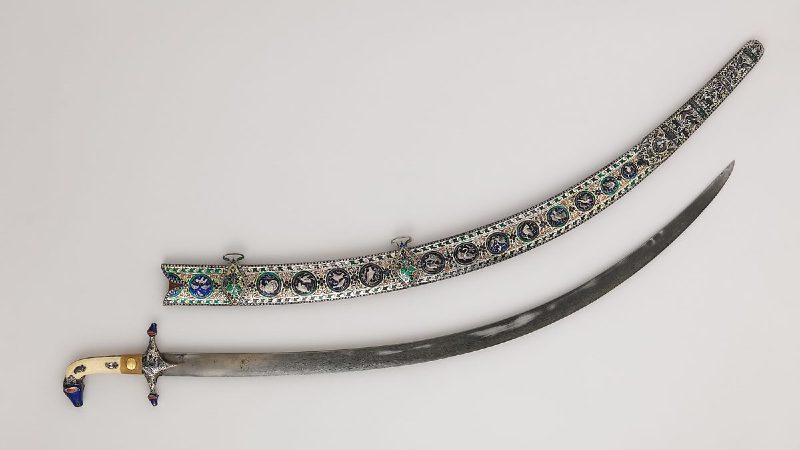
Unlike the Indian talwar, the Persian shamshir has a radical curve and tapering blade. In combat, it was efficient for slashing but less effective for thrusting. It traditionally had an L-shaped pommel and straight quillons, though some shamshir blades are mounted in talwar hilts. It came to India in the 16th century, and by the 19th century, it was widely used in Turkey and other parts of the Islamic world.
Indian Talwar vs. Turkish Kilij
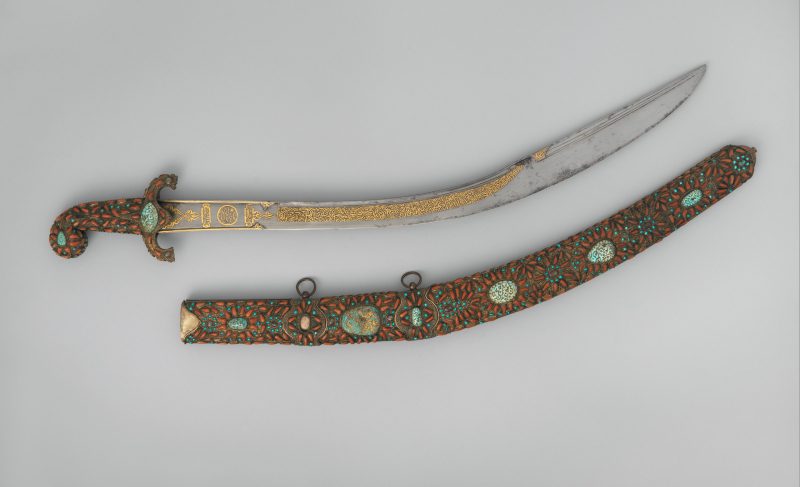
The Turkish kilij is recognized by its deep curve cut and flared tip called yelman which enhanced its slashing power. Unlike the Indian talwar, these Turkish sabers would have been difficult to draw from a scabbard. So, they had specially adapted scabbards that featured a slot cut covered with sprung steel. It was first used in the Ottoman Empire in the 15th century.
Indian Talwar vs. Afghan Pulouar

Closely associated with the ethnic group known as Pashtuns, the Afghan pulouar is a saber with varying blade designs. It sometimes features a disc pommel similar to the Indian talwar, but its quillons droop downwards and often have enlarged ends.
Indian Talwar vs. Sri Lankan Kastane
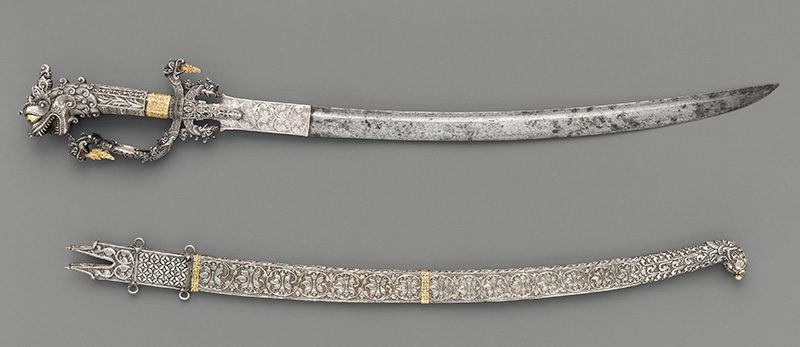
Like the Indian talwar, the kastane is valued for its craftsmanship and efficiency as a weapon. However, it has a short, curved blade and comes with an ornate scabbard. It is also notable for its fanciful decorations on its pommel which often features the head of a lion.
History of the Indian Talwar
The Hindi talwar comes from Sanskrit taravāri, meaning sword. Produced in the 14th century, the Indian
The Mughal Empire and the Indian Talwar
In the 16th century, the Mughal Empire in northern India brought with it the fine curved swords found in the Islamic world. It was a Muslim dynasty of Turkic-Mongol origin that expanded its power over most of the Indian subcontinent and earned the loyalty of the non-Muslims, especially the Hindu Rajputs.
For centuries, the Rajputs prevented Muslim domination of Hindu India, but they later adopted Islam after the Mughals took over. The Mughal emperor Akbar reigned from 1556 to 1605, and his army fought with talwar swords and the latest artillery. Many Hindu princes adopted the talwar, though the straight-bladed khanda
The British Raj and the Indian Swords
During the late 18th and early 19th centuries, the British East India Company extended its authority over most of India. It led to direct British rule from 1858 to 1947, a period known as the British Raj. However, these political changes had a limited impact on
Indian Swords in Martial Arts
In kalaripayattu, a practitioner would choose a weapon, from a metal
Conclusion
The talwar was the typical



